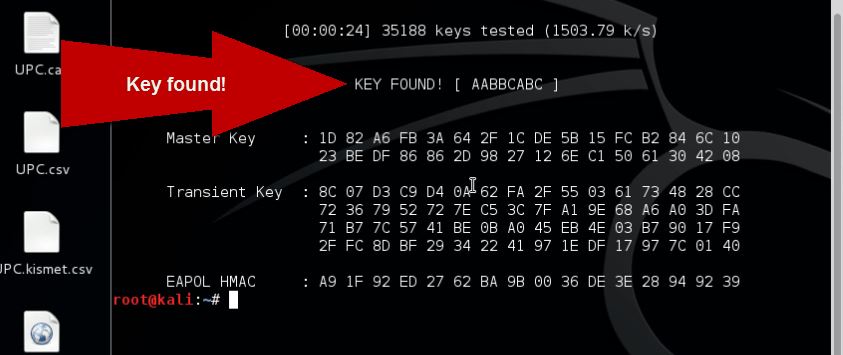Why Kali Linux?
With Kali Linux, hacking becomes much easier since you have all the tools (more than 300 pre-installed tools) you are probably ever gonna need. Others can be downloaded easily. Now this tutorial will get you started and you'll be hacking with Kali Linux before you know it.The problem with beginners
 Now,
I've been dealing with beginners since a long time (and myself was one
for a long time too). What they want is magic. A tool which is easy to
use, works on Windows, can be download by searching on Google and
clicking on the first link we see, and will do all the hacking itself on
the push of a button. Sadly, no such tool exists (lets be real, would
you use Facebook if a tool existed which you could install on Windows,
simply type the person's username/mobile number/email and then just like
that get his/her Facebook password?).
Now,
I've been dealing with beginners since a long time (and myself was one
for a long time too). What they want is magic. A tool which is easy to
use, works on Windows, can be download by searching on Google and
clicking on the first link we see, and will do all the hacking itself on
the push of a button. Sadly, no such tool exists (lets be real, would
you use Facebook if a tool existed which you could install on Windows,
simply type the person's username/mobile number/email and then just like
that get his/her Facebook password?). Hacking is an art, and it takes years of practice to master it. So how to get started? Having no idea about hacking is okay, but being a newbie with computers in general is not allowed. When I say beginner, I mean someone who has no experience with programming and with hacking methodologies. I didn't mean someone who needs a 1 page guide on how to download a tool. If you want to be a hacker, you have to work hard. So how to get started? If you have installed Kali Linux, click here to skip past the installation paragraphs and go to hacking section of this post)
Getting Started
Now, I am not boring you with theory (^ As if all this wasn't enough theory). My aim is to get you to the point where you can start hacking with Kali Linux as soon as possible. What I'm gonna do is tell you what to do. The process is rather simple :-- If you are totally clueless as to what Kali Linux is - Go to Kali's official website and get an idea.
- If you haven't already done that,go to their download page and download Kali Linux iso file.
Things get tough now
If you have no previous experience with Linux and virtual machines and all that stuff, getting Kali Linux up and running won't be a piece of cake.You have1. Read the Kali official documentation
That will give you an idea about what is a virtual machine, how OS can be run from USB, and how to create a partition and run 2 OS simultaneously. This is what I recommend. For that, go to Kali Official Documentation .2. Read my modified version of Kali documentation
The second option is to look at these posts, which are just sparingly modified (and now outdated) versions of the Kali docs, and offer no advantage other than saving your time as their documentations cover much more than what the ones here do, and you don't really need to know all so much... yet. I'm linking them up here:- Installing Kali Linux On Hard Disk using USB (easiest)
- Dual Boot Kali (alongside Windows) (not easy, fairly risky, can result in data loss if done improperly)
- Install Kali Linux in VmWare complete detailed guide (moderaltely easy)
3. Utilize the zillions of tutorials on YouTube (New option)
The
time this guide was written (for the first time in 2013, then updated
in 2014), Kali wasn't so popular. However, now there are plenty of
websites dedicated to Kali Linux, and a lot of YouTube videos on how to
install Kali. My installation guides are outdated (mine are for Kali
1.0, now even Kali 2.0 is outdated and Kali rolling is what most of you
should be using). While you can use an old installation guide and make a
few changes and have it work for you, it's better, especially if it's
your first time installing an operating system alongside another, that
you follow a guide tailored for your situation (eg. if you are
installing Kali rolling on Windows 10 on virtualbox, then follow guide
for the exact same configuration, and not for Kali 2.0 on Windows 8 on
Vmware).
Installing
an OS is serious business, don't take it lightly, and don't get
discouraged if you fail at first. Also, backup your data if you're going
for a dual boot.
Command Line Interface
 |
| Some bash commands |
A pretty awesome site for that is - http://linuxcommand.org/
Going
through the complete site is on its own enough exercise to keep you
occupied for a month, but you can proceed gradually. The first few
tutorials here will keep in mind that you don't have much info about
cli, and will be really beginner friendly.
Some Useful Commands:
If you don't plan on learning all of linux cli commands, here are a few that will keep your boat afloat.
- The default username and password is 'root' and 'toor'.
- Type 'poweroff' in the terminal to shutdown.
- apt-get command can be used to install tools and updates.
- apt-get update and apt-get upgrade will update all the programs installed on your machine.
- apt-get dist-upgrade will install the latest distribution of Kali(i.e. it upgrades your OS).
PS
: Tapping <tab> while typing makes Kali complete the word for you
. Double tapping <tab> makes it display all possible words
starting with the incomplete word. Ctrl+c stops the functioning of any
tool that is running. Pressing the up arrow key shows the command you
last typed.



